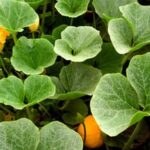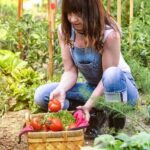Are you interested in starting your own vegetable container garden? If so, you’ve come to the right place. In this article, we will explore the world of vegetable container gardening and provide you with all the information you need to get started. Whether you have limited outdoor space or simply want to try a new approach to growing vegetables, container gardening is a versatile and rewarding activity.
Vegetable container gardening allows you to grow your own produce in small spaces, such as balconies, patios, and even windowsills. In this section, we will discuss the benefits of vegetable container gardening and why it has become increasingly popular among urban dwellers and gardening enthusiasts alike.
We will also guide you through the process of choosing the right containers for your vegetable garden, selecting the best vegetables to grow in containers, and identifying the essential tools and supplies you’ll need for a successful container garden. So, let’s dive in and discover how you can enjoy the satisfaction of growing your own fresh vegetables right at home through vegetable container gardening.
Benefits of Growing Vegetables in Containers
When it comes to growing your own vegetables, container gardening offers a wide range of benefits that make it an attractive option for many people. Whether you have limited outdoor space, poor soil quality, or simply want the convenience of having a portable garden, vegetable container gardening can be a rewarding and enjoyable experience.
Here are some key benefits of growing vegetables in containers:
1. Space-saving: For those with limited outdoor space, container gardening is a great solution. You can place your containers on balconies, patios, or even windowsills, allowing you to enjoy gardening regardless of your living situation.
2. Weed and pest control: Container gardening can help reduce the risk of weeds and pests that often plague traditional gardens. With containers, you have more control over the soil and environment, making it easier to keep unwanted visitors at bay.
3. Accessibility: One of the greatest benefits of vegetable container gardening is its accessibility. You can position your containers at a comfortable height, reducing strain on your back and knees during planting and harvesting.
In addition to these benefits, vegetable container gardening also allows for greater flexibility in terms of soil quality and location. With the right containers and care, you can grow a wide variety of vegetables right outside your door.
Choosing the Right Containers for Vegetable Gardening
When it comes to vegetable container gardening, choosing the right containers is crucial for the success of your garden. The type and size of the containers you select can greatly impact the growth and yield of your vegetables. Here are some key considerations when choosing the right containers for your vegetable container garden:
1. Size: Consider the size of the mature plants of the vegetables you want to grow. Larger vegetables like tomatoes and peppers will need bigger containers, while smaller plants like lettuce or herbs can thrive in smaller pots. Ensure that the containers have enough space for proper root development.
2. Material: There are various types of materials used for vegetable containers, including plastic, ceramic, terracotta, and fabric. Each material has its own pros and cons in terms of durability, insulation, and water retention. Plastic containers are lightweight and retain moisture well, while ceramic pots are sturdy but heavier.
3. Drainage: Proper drainage is essential for vegetable container gardening to prevent waterlogged soil which can lead to root rot. Look for containers with drainage holes at the bottom to ensure excess water can escape.
In addition to these considerations, it’s important to also think about where you’ll be placing your containers – whether on a balcony, patio, or rooftop – as this will impact sun exposure and wind conditions that can affect your vegetable garden. By carefully selecting the right containers for your specific vegetables and growing environment, you can set your vegetable container garden up for success from the start.
Selecting the Best Vegetables for Container Gardening
When it comes to vegetable container gardening, there are certain vegetables that thrive better in containers than others. Whether you have limited outdoor space, poor soil quality, or simply want to have fresh produce right at your fingertips, choosing the right vegetables for your container garden is crucial for a successful harvest.
One of the most popular vegetables for container gardening is tomatoes. They come in a variety of sizes and can be easily grown in containers, making them an ideal choice for those with limited space. Other popular vegetables for container gardening include peppers, lettuce, carrots, radishes, and herbs such as basil and cilantro. These vegetables not only grow well in containers but also provide a bountiful harvest throughout the growing season.
When selecting the best vegetables for your container garden, it’s important to consider the size of your containers and the amount of sunlight they will receive. Some vegetables, like tomatoes and peppers, require larger containers to accommodate their root systems and provide stability as they grow. Additionally, most vegetables need at least 6-8 hours of sunlight per day to thrive, so be sure to place your containers in a sunny location.
In addition to choosing the right vegetables for your container garden, it’s also essential to consider companion planting. Certain combinations of vegetables and herbs can benefit each other by deterring pests or enhancing growth. For example, planting basil near tomatoes can help improve their flavor and repel pests naturally. By carefully selecting the best vegetables for your container garden and considering companion planting, you can create a thriving and productive mini-garden right on your patio or balcony.
Essential Tools and Supplies for Vegetable Container Gardening
When it comes to vegetable container gardening, having the right tools and supplies is essential for a successful harvest. One of the most important items you will need is a suitable container for each vegetable you plan to grow. This can include pots, planter boxes, or even hanging baskets. It’s important to choose containers that are large enough to accommodate the root system of your chosen vegetables.
In addition to containers, you will also need quality potting soil. The type of soil you use can make a big difference in the health and vitality of your vegetable plants. Look for a well-draining mix that is specifically formulated for use in containers. You may also want to consider adding some organic matter or compost to the soil to provide additional nutrients for your plants.
Another essential supply for vegetable container gardening is a watering can or hose attachment with a gentle spray nozzle. Container gardens typically require more frequent watering than traditional gardens, so it’s important to have an easy and efficient way to water your plants. Additionally, having a small set of hand tools such as a trowel, pruning shears, and gloves can make planting and maintaining your container garden much easier.
| Container Gardening Tools | Supplies Needed |
|---|---|
| Containers (pots, planter boxes) | Potting soil |
| Watering can or hose attachment | Hand tools (trowel, pruning shears, gloves) |
By ensuring that you have these essential tools and supplies on hand, you will be well-equipped to start your own successful vegetable container garden and enjoy fresh produce right from your own home.
Tips for Maintaining a Successful Vegetable Container Garden
Maintaining a successful vegetable container garden requires proper care and attention to ensure a bountiful harvest of fresh produce. One important aspect to consider is the location of your containers. Most vegetables require at least 6-8 hours of sunlight, so it’s crucial to place your containers in a sunny spot. Additionally, ensure that your containers have proper drainage to prevent waterlogged soil, which can lead to root rot and other issues.
Regular watering is essential for the health of your vegetable plants. Depending on the type of vegetables you are growing and the climate in your area, you may need to water your containers daily, especially during hot summer months. It’s also important to monitor for pests and diseases, as container-grown plants can be more susceptible to these issues due to their confined environment.
Furthermore, maintaining a successful vegetable container garden involves regular fertilization. As nutrients in potting soil can deplete over time, it’s important to provide additional nutrients through organic or synthetic fertilizers. Be sure to follow the recommendations on the fertilizer label and avoid over-fertilizing, which can damage your plants.
Proper maintenance also includes pruning and harvesting your vegetable plants at the right time. Remove any dead or yellowing leaves, as well as any overcrowded growth that may inhibit air circulation. Regularly harvest ripe vegetables to encourage further fruit production and prevent plants from becoming overgrown.
Finally, be vigilant about monitoring the overall health and growth of your vegetable container garden by regularly inspecting your plants for any signs of distress or disease. With these tips in mind, you can enjoy a thriving and productive vegetable container garden.
| Aspect | Tips |
|---|---|
| Location | Place containers in a sunny spot with proper drainage. |
| Watering | Regularly water your containers, especially during hot weather. |
| Fertilization | Regularly fertilize your plants using organic or synthetic fertilizers. |
| Maintenance | Prune regularly and harvest ripe vegetables on time. |
Common Mistakes to Avoid in Vegetable Container Gardening
Choosing the Wrong Containers
One of the most common mistakes in vegetable container gardening is choosing the wrong containers. It’s important to select containers that are large enough for the vegetables you want to grow and have proper drainage. A common mistake is choosing containers that are too small, causing the plants to become root-bound and limiting their growth potential. Additionally, containers without proper drainage can lead to waterlogged soil, which can suffocate the plant roots.
Overcrowding Plants
Another mistake to avoid in vegetable container gardening is overcrowding plants. While it may be tempting to pack as many plants as possible into a single container, overcrowding can lead to competition for nutrients, water, and sunlight. This can result in stunted growth and poor yields. It’s important to follow spacing recommendations for each type of vegetable and resist the urge to overcrowd your containers.
Ignoring Pests and Diseases
Ignoring pests and diseases is a common mistake that can wreak havoc on a vegetable container garden. Just because your plants are in containers doesn’t mean they’re immune to pests and diseases. Be sure to regularly inspect your plants for signs of pest infestations or disease, and take appropriate measures to address any issues. This may include using organic pesticides or fungicides, or simply removing affected plants to prevent the spread of disease.
By being mindful of these common mistakes and taking proactive steps to avoid them, you can set yourself up for success in vegetable container gardening. With the right containers, proper spacing, and vigilant pest and disease management, you’ll be well on your way to enjoying a bountiful harvest from your very own vegetable container garden.
Harvesting and Enjoying the Fruits of Your Container Garden
Timing Is Key
When it comes to harvesting the vegetables from your container garden, timing is key. Each vegetable has its own optimal time for harvest, so it’s important to familiarize yourself with the specific requirements of the vegetables you are growing.
For instance, tomatoes should be picked when they are fully colored and firm, while lettuce should be harvested before it starts to bolt and turn bitter. By understanding the ideal harvest times for your vegetables, you can enjoy them at their peak flavor and freshness.
Celebrating Your Harvest
There’s nothing quite like the satisfaction of harvesting vegetables that you have grown yourself. Whether it’s a handful of ripe cherry tomatoes or a basket full of crisp cucumbers, taking in the fruits of your labor is a joyous occasion.
Consider celebrating your harvest by preparing a meal with freshly picked ingredients or sharing your bounty with friends and family. Not only will you get to savor the flavors of homegrown produce, but you’ll also spread the happiness that comes with growing your own food.
Preserving Your Harvest
While enjoying your fresh vegetables right after harvest is delightful, you may also want to preserve some of your bounty for later use. There are various methods for preserving vegetables, such as freezing, pickling, and canning.
By preserving your harvest, you can extend the enjoyment of your container garden well beyond its growing season. Additionally, having jars of homemade pickles or bags of frozen peas from your garden will allow you to relish the taste of summer even during the colder months.
As you continue on your vegetable container gardening journey, remember that harvesting is one of the most rewarding parts of the process. It’s a tangible reminder of all the hard work and care that goes into cultivating a thriving container garden. Enjoy each picking session as an opportunity to savor nature’s gifts and appreciate the satisfying results of your efforts in vegetable container gardening.
Conclusion
In conclusion, vegetable container gardening is a wonderful and rewarding way to enjoy the benefits of growing your own vegetables, even if you have limited space. The joy of watching your plants thrive and eventually harvesting your own fresh produce is truly priceless. Whether you are a beginner or an experienced gardener, container gardening offers a convenient and flexible way to grow a variety of vegetables right at home.
By choosing the right containers, selecting the best vegetables for container gardening, and using essential tools and supplies, you can create a thriving vegetable garden in even the smallest outdoor or indoor spaces. Avoiding common mistakes and following tips for maintenance will help ensure the success of your garden. In no time, you will be able to enjoy the fruits of your labor by harvesting and savoring your very own homegrown vegetables.
Overall, vegetable container gardening is not only a practical solution for those with limited space, but it also provides a sense of satisfaction and pride in knowing that you have taken control of where your food comes from. So why not give it a try? Start your own vegetable container garden today and experience the joy of growing your own fresh and nutritious produce right at home.
Frequently Asked Questions
What Vegetables Grow Well Together in a Container?
Certain vegetables grow well together in a container due to their complementary needs and growth habits. For example, planting carrots with leafy greens like lettuce or spinach can work well because they have different root depths and moisture needs.
What Vegetables Are Good to Grow in Containers?
Many vegetables are good to grow in containers, including tomatoes, peppers, cucumbers, zucchini, radishes, and herbs like basil and parsley. These plants are well-suited for containers because they don’t require a lot of space for their roots to spread out.
What Is the Best Container Mix for Vegetables?
The best container mix for vegetables is a well-draining, nutrient-rich soil that provides good aeration for the plant roots. A mix of potting soil, compost, and perlite or vermiculite can create the ideal growing medium for vegetables in containers. This type of mix helps retain moisture without waterlogging the roots and provides essential nutrients for healthy plant growth.

If you’re looking to get into vegetable gardening, or are just looking for some tips on how to make your current garden better, then you’ve come to the right place! My name is Ethel and I have been gardening for years. In this blog, I’m going to share with you some of my best tips on how to create a successful vegetable garden.





